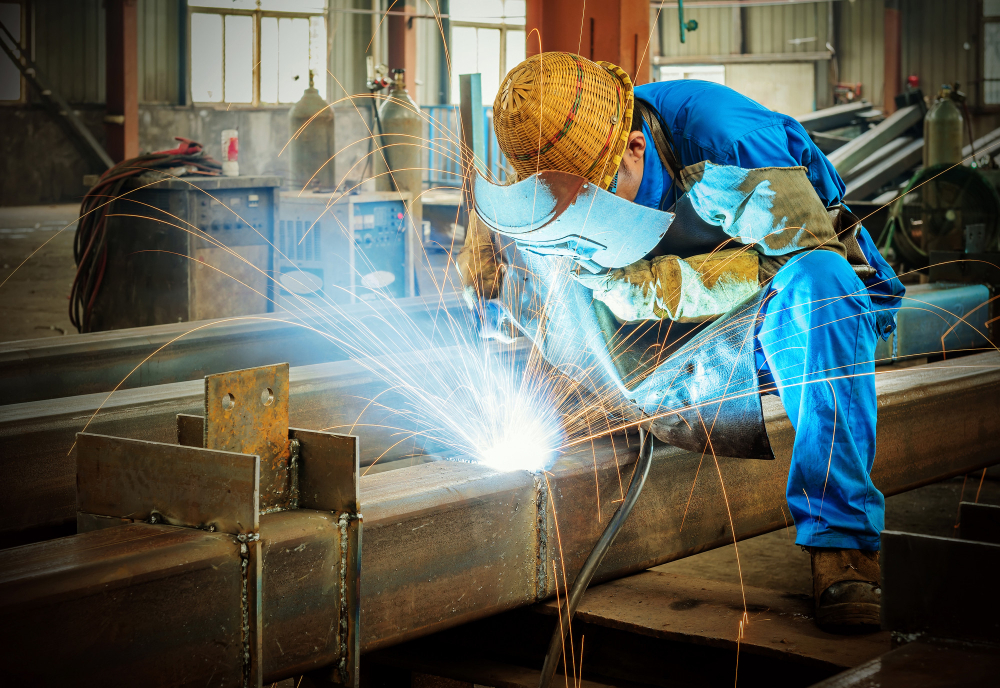Countless industries, including commercial and pharmaceutical, need the support of structural steel fabrication. Is that a not-so-familiar term for you? But let us state that process piping operates daily to transport chemicals, water and other substances.
The Blog That Unveils Every Depth
We have various facts to share concerning steel structure fabrication. And we know why we are doing this; doubts revolving in your head don’t make you feel good.
The process involves rolling, cutting and welding metal plates to support the piping functionality.
Furthermore, determining the ideal shape and size matters.

Seeing the Various Types of Structural Steel Fabrication
Piping fabrication usually undergoes categorization as follows:
-
- Casing.
- Penstock.
- Piling.
Although each of these represents piping, differences occur based on functionality. Let’s explore each option one at a time.
The Casing-Related Information: This option subdivides into the horizontal and vertical casing. On one side, the former is the ultimate protective barrier for underground utility lines. On the other side, its vertical counterpart supports the structure as it comprises concrete.
Penstock Fabrication Option: Penstock has a simple purpose: it comes into use to transport municipal water.
Mentioning the Essence of Piling: Piling is an essential component of structural steel fabrication that takes immense care of the foundation’s stability and strength.
Discussing the Piping Fabrication Specifics
Detailing is essential in the pipe fabrication process. But are you aware of the irreplaceable segments of this procedure? We have you covered in this matter.
-
- The process begins with marking steel pipe pieces while following the code standards for tracing.
- The work progresses toward cutting the steel plates according to size requirements. This procedure depends on the steel beveling and the specific needs of clients.
- What do we mean by beveling? It is a preparation stage wherein steel edges become ready for welding. Furthermore, the beveling process enhances the possibility of complete joint penetration.
- After implementing the above three steps, manufacturers focus on metal plate rolling. It requires the use of plate rolls to obtain the desired shape.
Finally, steel structure fabrication involves welding, followed by a thorough inspection. And that’s how you get long sections of steel pipes.
What Tools Are Necessary for Piping Fabrication?
Here are two things that fabrication experts follow strictly.
-
- Work Efficiency.
- Safety.
The tools we will mention are only necessary for workshop usage. That’s because they must avoid weather fluctuations to remain in tip-top conditions.
Let us unveil the list of equipment that is ideal for structural steel fabrication:
-
- The Use of Pipe Purging Tools.
- Dependability of C Clamps.
- Pipe Jacks and a Welding Machine.
- Pipe Rollers with Adjustability Features.
- Tools for Flange Alignment Purpose.
- Forklifts and Pipe Threaders.
- Beveling and Cutting Tools.
- Grinder and a Center Punch.
- Tower Cranes.
- Adjustable or Torque Wrenches.
- A Pipe Bending Machine.
- Fit-Up Equipment for Pipe Fabrication Process.
- The Need for Wraparound Tapes.
These tools are the fabricator’s weapon for crafting the work with precision.
How Does BigFoot Ensure Fabrication Efficiency?
The pipe pile distributors of BigFoot Pipe & Piling take care of all the fabrication processes and provide you with quality products. Our trained staff specializes in efficiency and accuracy while processing your order. More details await on our homepage.
Precision Process Piping Fabrication
Get high-quality, durable piping solutions tailored to your needs with Bigfoot Pipe & Piling. Our expert fabrication ensures efficiency and reliability for any project. Contact us today to learn more!

